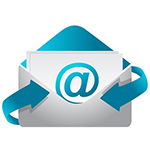You likely send and receive countless emails daily. Effective email communication is crucial for maintaining professionalism, ensuring clarity, and fostering good relationships with your team, clients, and vendors. Mastering email etiquette can significantly improve how your messages are perceived and ensure smooth, efficient communication. Here’s how you can perfect your email etiquette.
Use a Clear and Concise Subject Line
Your subject line is the first thing recipients see, so make it count. A clear, concise subject line helps the recipient understand the email’s purpose immediately. Avoid vague subjects like “Meeting” or “Update” and opt for more specific ones like “Team Meeting – March 10 at 10 AM” or “Quarterly Report Submission.”
Greet Properly
Start your emails with a proper greeting. The level of formality depends on your relationship with the recipient. For more formal correspondence, use “Dear [Name],” and for a more casual tone, “Hi [Name],” or “Hello [Name]” works well. Avoid overly informal greetings like “Hey” in professional settings.
Be Clear and Concise
Get to the point quickly. State the purpose of your email in the first few sentences. Long, rambling emails can confuse the reader and bury the main message. Use short paragraphs and bullet points to break up information and make it easier to digest.
Use Proper Grammar and Spelling
Proofread your emails before hitting send. Spelling and grammatical errors can make you appear careless and unprofessional. Most email clients have built-in spell checkers, so take advantage of them. Reading your email out loud can also help catch mistakes.
Maintain a Professional Tone
Even if you’re addressing a familiar colleague, maintain a professional tone. Avoid using slang, jargon, or overly casual language. Be respectful and courteous, especially when addressing sensitive topics or providing feedback.
Be Mindful of Your Formatting
Keep your email formatting simple and professional. Use a standard font and avoid excessive use of bold, italics, or colored text. Stick to a plain white background and avoid unnecessary graphics or emoticons in professional emails.
Include a Clear Call to Action
If your email requires the recipient to take action, make it clear. State what you need from them and provide any necessary deadlines. For example, “Please review the attached report and send me your feedback by Friday, March 12.”
Use Professional Signatures
End your emails with a professional signature. Include your full name, job title, company, and contact information. A well-crafted signature adds to your credibility and makes it easy for recipients to contact you.
Use “Reply All” Sparingly
Be cautious with the “Reply All” function. Only use it when your response is relevant to everyone on the email thread. Overusing “Reply All” can clutter inboxes and annoy recipients with unnecessary messages.
Respect Recipients’ Time
Be mindful of when you send emails. Avoid sending non-urgent emails outside of business hours unless it’s necessary. Respecting recipients’ time shows consideration and helps maintain work-life balance.
Follow Up Appropriately
If you don’t receive a response within a reasonable time, it’s okay to follow up. Politely remind the recipient of your initial email and request a response. However, avoid being pushy or sending multiple follow-ups in quick succession.
Manage Attachments Wisely
When sending attachments, ensure they are appropriately named and relevant to the email content. Mention the attachments in the body of your email and briefly explain their purpose. If the files are large, consider using file-sharing services to avoid clogging up recipients’ inboxes.
Practice Confidentiality
Be mindful of confidential information. If your email contains sensitive data, make sure it’s sent to the right recipient and that they have the proper authorization to view it. Use secure methods to share highly confidential documents.
Final Thoughts
Mastering email etiquette is essential for effective communication and maintaining professionalism in the workplace. By using clear subject lines, proper greetings, concise language, and professional formatting, you can ensure your emails are well-received and understood. Remember to respect recipients’ time, follow up appropriately, and manage attachments wisely. With these tips, you’ll enhance your email communication skills and contribute to a more efficient and respectful office environment.
